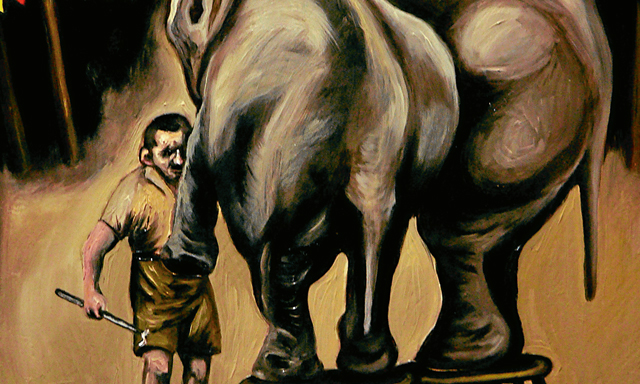Social-political artist Sue Coe is coming to Abu Dhabi to lead a discussion titled The Life We Live and the Art We Make, focusing on her passion for animal rights and their welfare.
Stark images of animal exploitation and cruelty create a vivid reflection of the modern world, says Sue Coe – an activist and artist who derives inspiration from her passion for animal rights. She will be visiting Abu Dhabi on October 8 for a seminar entitled The Life We Live and the Art We Make with fellow artist and activist, Zena el Khalil.
Sue explains the title of the talk: ‘There is a consistency between life and art – they are not separate, but inform each other. Much of my work is trying to make sense of this world, putting into pictures what cannot be described in words.’
Currently living in upstate New York, she was recruited for the role on the street. ‘I was walking to the subway on 14th Street in New York City, and a man followed me, asking if I would like to go to Abu Dhabi… I said yes I would, for the adventure. In hindsight he could have been a stalker, but he wasn’t. He is a teacher at NYU in Abu Dhabi.
‘The engine that drives the art is the content, not the form’ Sue continues. ‘In the talk, I hope to describe some of the slaughterhouses I have sketched in, what happens to the animals in their short lives and why the global meat industrial complex does not want witnesses to their crimes.’
Images of birds in slaughterhouses, and tortured animals can be shocking, however Sue says the reaction to her work is generally positive. ‘Because it is figurative art, art that tells a story. It opens up a dialogue of other people witnessing and sharing their lives. Many have worked in the meat industry, or in a hospice, or in a prison, and this art reminds them and encourages others to draw their own stories and lives. The word is also used as a tool to further education about animal rights. Animal activists are everywhere, in every country, and so are artists. It’s another country that exists, not on a map, but in the heart, the land of art and non-violence.’
Her art is primarily pencil and paper, with minimal colour, making each image austere. ‘I prefer the elegance of black and white, pencil marks on white paper. It costs no money to carry a pencil around and a piece of paper. It looks stark, not having much colour, but the viewer can see the content clearly. Colour is rarely used in my work, I find it too disconcerting, and it loses too much immediacy and urgency with colour.’
‘Art does not happen until the viewer says it’s art. The artist can think what they like, but until the viewer merges their reality and memories onto the work, the art is only half alive,’ Sue explains. ‘The response I would like to my art would be curiosity, to look further and then to make changes, it’s not good enough for art to reflect the world, we need to change it. The crimes are economic, and the time for change is now.’
Finally we asked what she is looking forward to seeing in Abu Dhabi. ‘So many things, to see the animals, art and people… I just hope I can get vegan food!’
Sue will be at NYU for the free seminar, The Life We Live and the Art We Make on October 8. Visit NYUAD to book your place www.nyuad.force.com/events. You can view Sue’s work at www.graphicwitness.org along with various other social-political artists.









